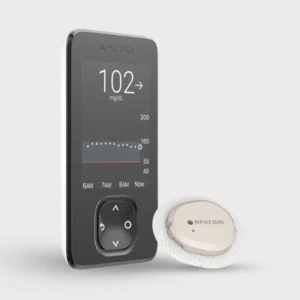Table of content
Can type 2 diabetes eat pea soup? It is the technical one. Peas are rich in fiber, and protein, which is good, however, since this is a starchy vegetable, it has high carbohydrate levels as well, thus it may result in spiking up your blood sugar levels. Thus, the answer to ‘Can type 2 diabetes eat pea soup’ is yes, but it may only be consumed in a very limited amount and with the right diabetes-friendly ingredients. However, it’s important to add here that if you are on a low-carb diet, you may want to avoid starchy vegetable like peas.
Let’s dive into how you can prepare a delicious and diabetes-friendly pea soup, explore ingredient options, and share some tips for a healthier bowl.
Why Pea Soup is Great for Type 2 Diabetes
Pea soup offers multiple benefits for people managing type 2 diabetes:
- High Fiber Content: Peas are loaded with soluble fiber, which helps control blood sugar spikes after meals.
- Protein Power: Peas provide plant-based protein, essential for keeping you full and maintaining muscle health.
- Low Glycemic Index (GI): Peas have a low GI, meaning they won’t cause sharp blood sugar spikes.
- Rich in Micronutrients: Peas are a good source of vitamins A, C, and K, as well as potassium and magnesium, which help regulate blood pressure—a common concern for diabetics.
Diabetes-Friendly Pea Soup Recipe
Ingredients (Serves 4)
- 1 cup green peas (fresh or frozen)
- 1 medium carrot, finely diced (high in fiber and beta-carotene)
- 1 celery stalk, chopped (low-calorie and packed with antioxidants)
- 1 medium onion, chopped (provides flavor and nutrients)
- 2 garlic cloves, minced (may help lower blood sugar levels)
- 2 cups low-sodium chicken or vegetable broth
- 1 small boneless, skinless chicken breast (optional, for extra protein)
- 1 tbsp olive oil (healthy fat that helps with satiety)
- ½ tsp turmeric (anti-inflammatory and may help regulate blood sugar)
- ½ tsp cumin (adds flavor and aids digestion)
- Salt and pepper to taste
- Fresh parsley or cilantro for garnish
Preparation Steps
1. Boil the Chicken First (Optional):
If using chicken, boil it separately for 15–20 minutes until fully cooked. Shred it and set it aside.
2. Sauté the Vegetables:
Heat olive oil in a pot over medium heat. Add the chopped onion, garlic, carrot, and celery. Sauté for 5–7 minutes until the vegetables soften.
3. Add Peas and Broth:
Add the green peas and low-sodium broth to the pot. Bring it to a boil, then reduce the heat and let it simmer for 20 minutes.
4. Blend for a Creamy Texture:
Use an immersion blender to blend the soup until smooth. If you prefer a chunkier texture, only blend half the mixture.
5. Add Spices and Chicken:
Stir in turmeric, cumin, salt, and pepper. Add the shredded chicken if using. Let the soup simmer for an additional 5 minutes to absorb flavors.
6. Garnish and Serve:
Ladle the soup into bowls and garnish with fresh parsley or cilantro.
Variations for Pea Soup
- Vegetarian Twist: Replace chicken broth with vegetable broth and skip the chicken for a fully plant-based version.
- Add Leafy Greens: Stir in a handful of spinach or kale during the last 5 minutes of cooking for added nutrients and fiber.
- Zesty Kick: For spice lovers, add ½ tsp of red pepper flakes or a dash of hot sauce to your bowl before serving.
- Lemon Zest: Add a hint of freshly grated lemon zest to enhance flavor and provide a refreshing twist.
- Extra Protein Boost: Toss in a tablespoon of chia seeds or flaxseeds before blending for added omega-3s and protein.
Why These Ingredients Work for Diabetics
- Carrots: While carrots contain some natural sugars, they are low in calories and high in fiber, making them suitable in moderate quantities.
- Celery: Virtually calorie-free and packed with antioxidants, celery adds crunch and enhances flavor.
- Garlic: Known for its potential to help reduce blood pressure and blood sugar levels.
- Turmeric: Curcumin, the active ingredient in turmeric, is anti-inflammatory and may improve insulin sensitivity.
- Olive Oil: A healthy fat that can help with long-term blood sugar control by reducing inflammation.
Pair your pea soup with a small serving of a side salad rich in leafy greens. Make sure to consume only in a limited amount as peas are starchy and contain carbohydrates. Rest, have a special focus on having good fats, and regular exercise.
Disclaimer: This blog is for informational purposes only.














Write a comment
Your email address will not be published. All fields are required